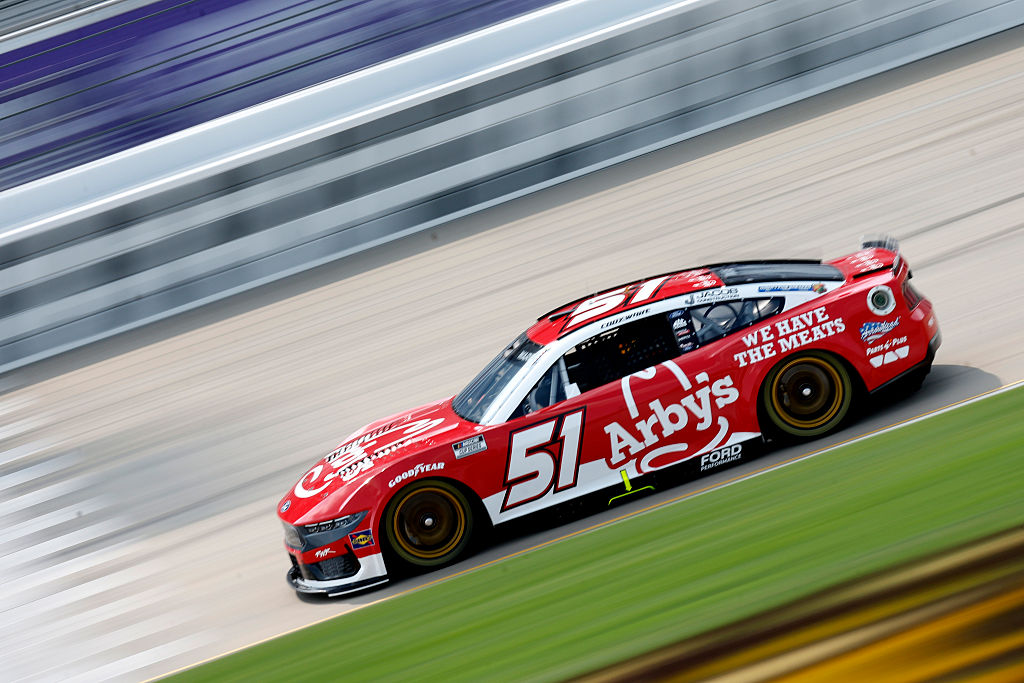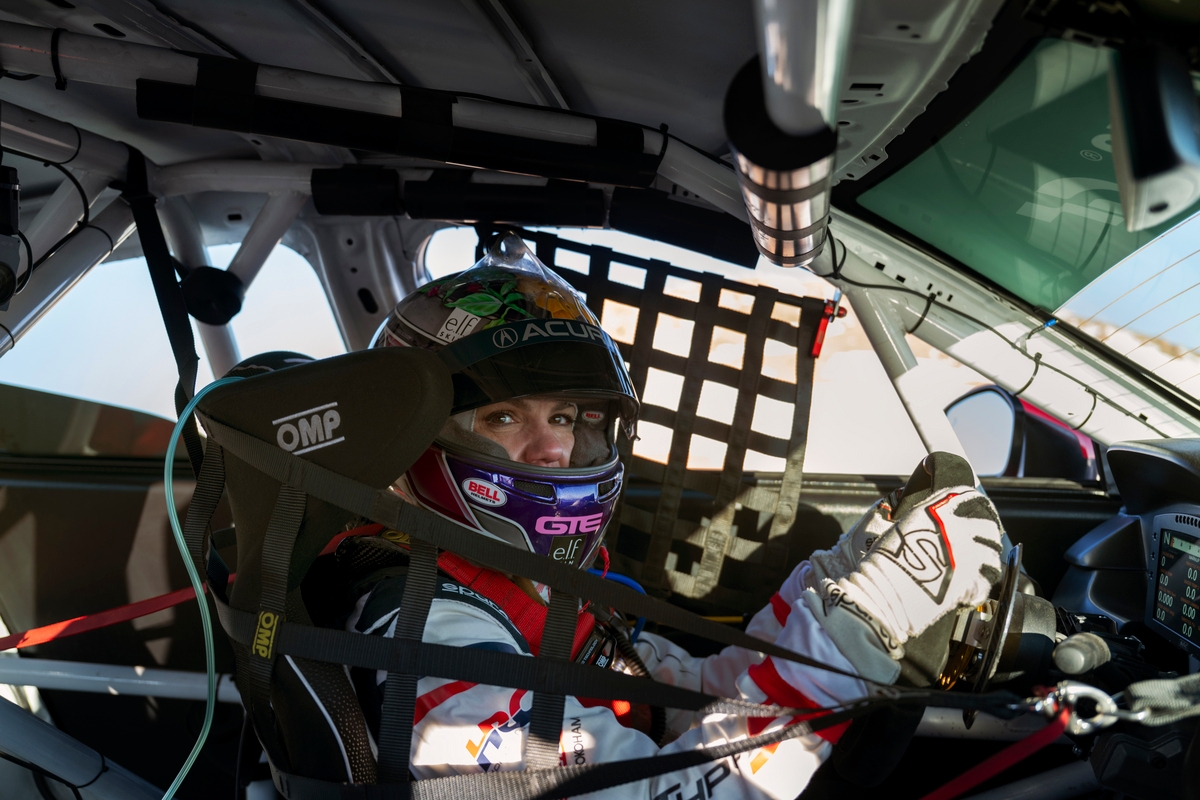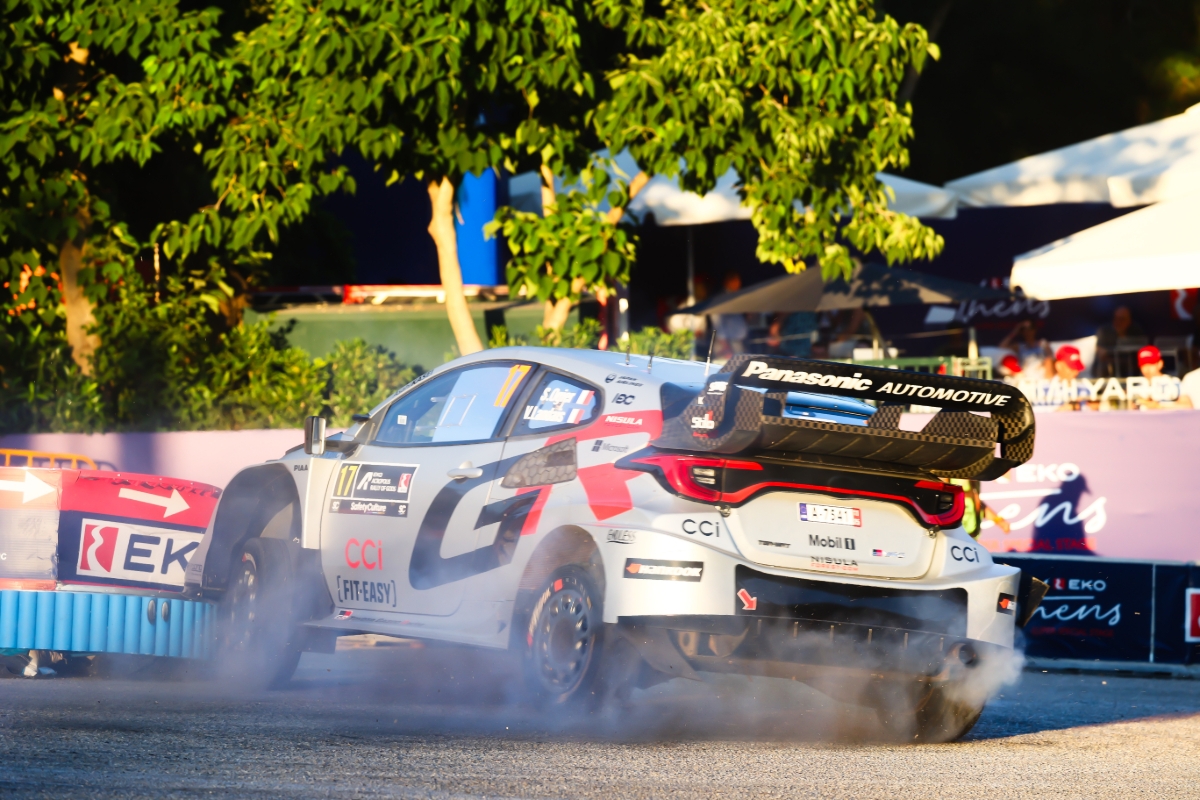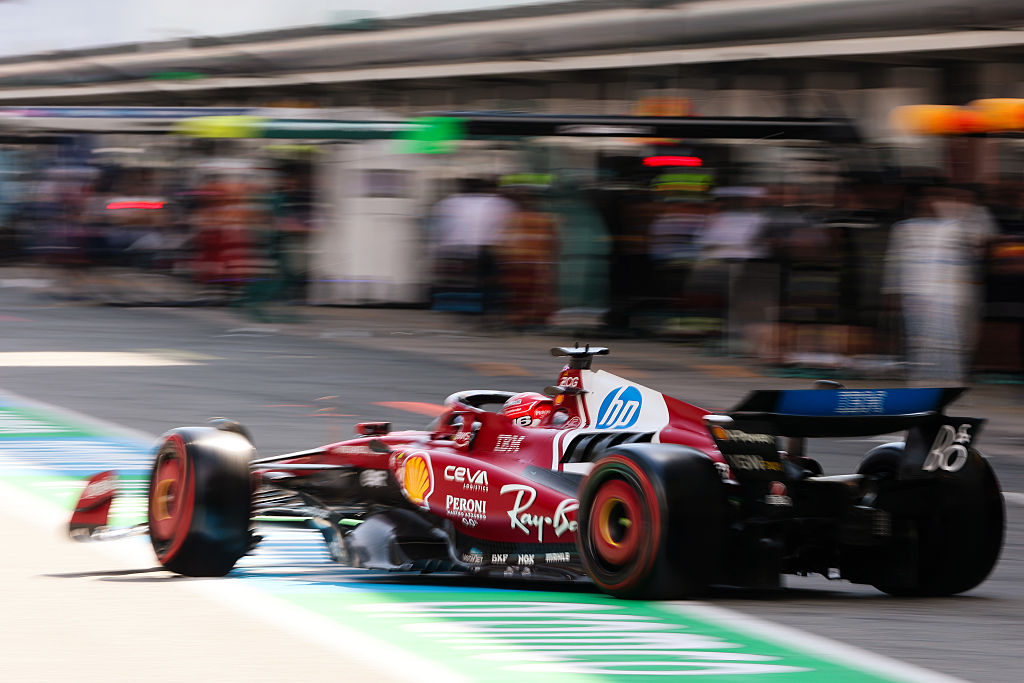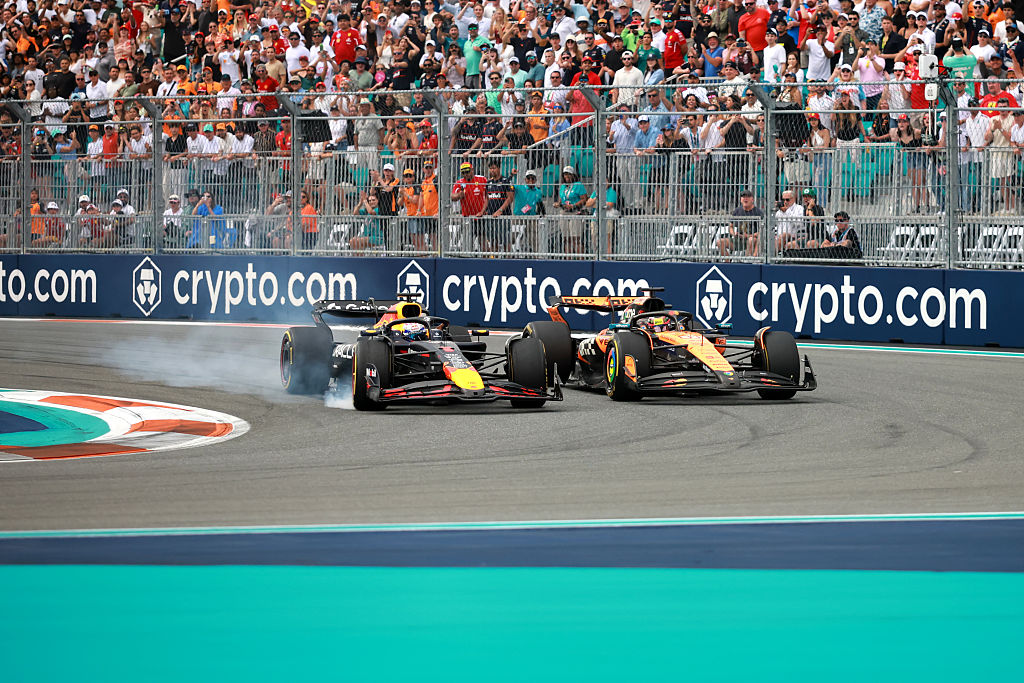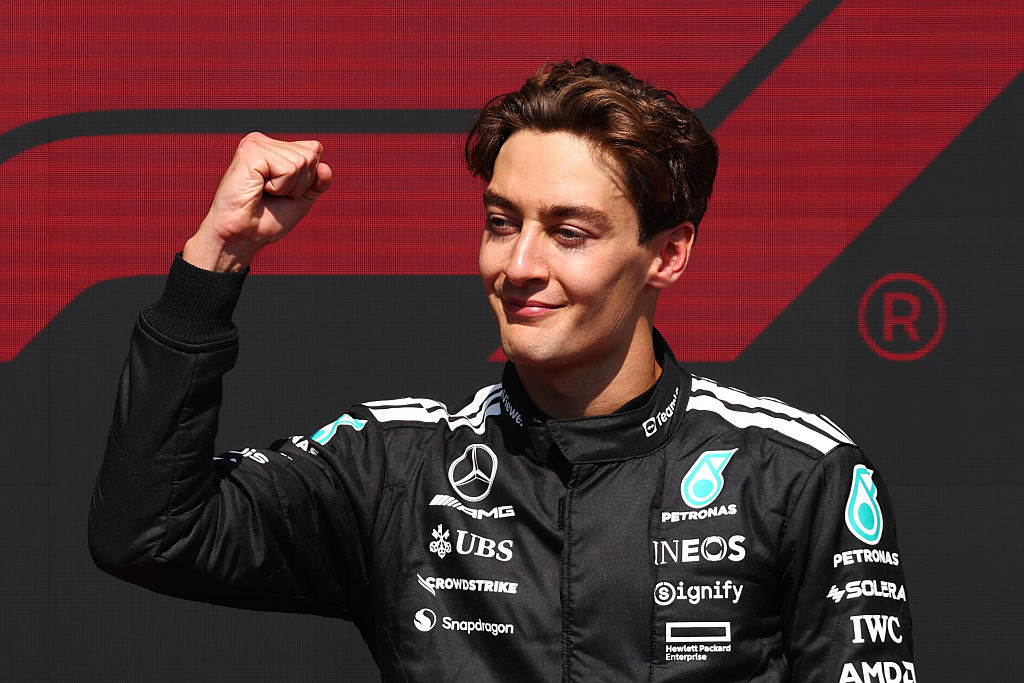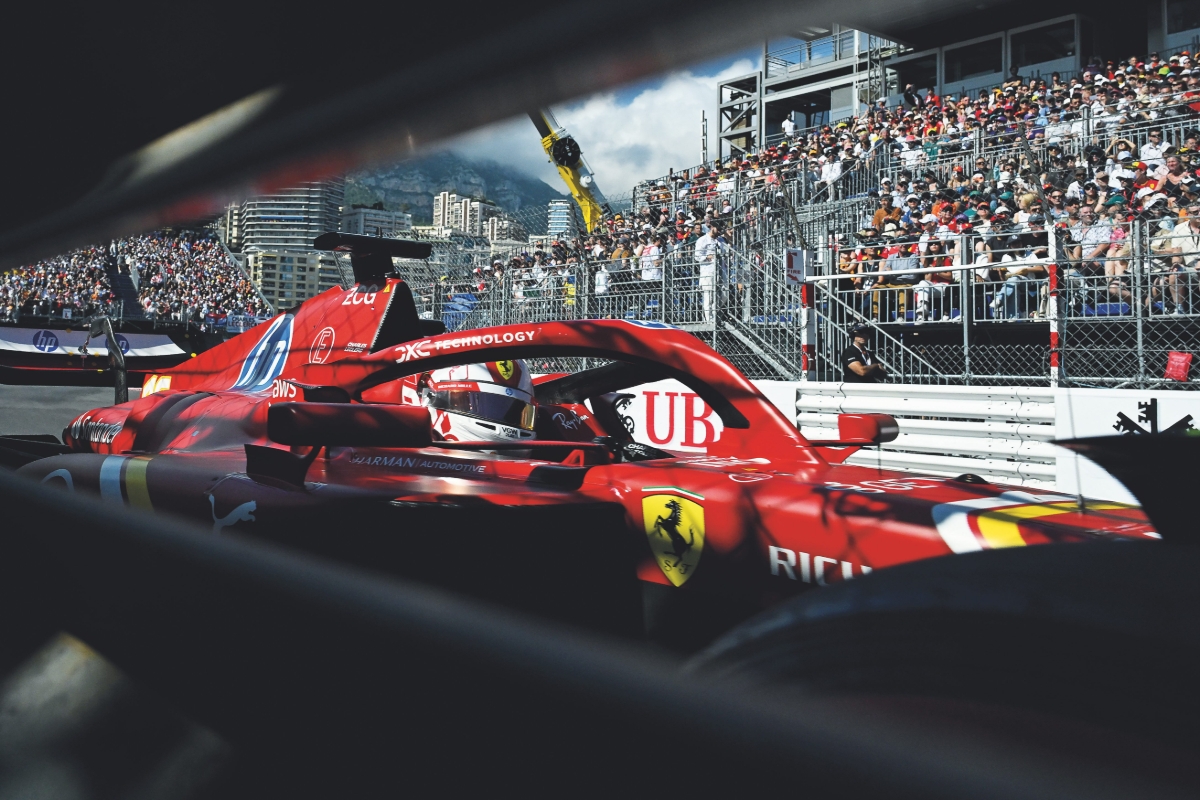
ShareThis is disabled until you accept Social Networking cookies.
From the new RACER magazine: Monaco Grand Prix, the fine line
Snatching pole for the Monaco Grand Prix is Formula 1’s ultimate game of inches. Local hero Charles Leclerc has earned three on the principality’s streets, but converted only one into a win.
You win the Monaco Grand Prix on Saturday. It can only be lost on Sunday. The last 20 races in Monte Carlo are proof of that, with 14 drivers winning from pole position. In fact, this year marks the 40th anniversary of the most recent genuine pass for the lead, by Ferrari driver Michele Alboreto on Alain Prost’s McLaren.
Nobody has felt the dizzying highs and agonizing lows more deeply than home hero Charles Leclerc. He knows what it takes to win in Monaco, although he experienced painful losses before tasting his sweetest victory last year.
Three times he’s had victory in his grasp on the streets of the principality after storming to pole position, but on two of those occasions it slipped through his fingers – in 2021, when a cracked wheel hub, a legacy of his qualifying crash, manifested itself before the
race, and the following year, thanks to Ferrari’s strategic flat-footedness.
The foundation of his long-awaited victory in 2024 was pole position, allowing him to control the race from start to finish. So what’s the secret of mastering the twists and turns of the most ludicrous, yet compelling track in Formula 1?
“In qualifying, it’s completely sending it, not thinking about whatever could go wrong,” says Leclerc. “In FP1, FP2, FP3, you are a little bit more aware of what can go wrong, so then it’s more about taking it step by step, making sure that you are comfortable, making small step after small step without ever going over the limit. Then, in Q3, you try to put together all the information that you’ve learned so far, think where the limit of the car is, and just go for it and see what happens.”
Sending it at Monaco, where just over two miles of asphalt threads its way between unyielding Armco barriers, is easier said than done. With no margin for error and a two-meter (79-inch) wide car weighing around 800kg (1,760lbs), it demands a near-impossible feat of driving prowess to deliver the perfect lap. When you have the privilege of watching from trackside at Monaco, in places just inches from the cars, what the drivers can do defies logic. The overwhelming feeling when standing behind the Armco is not one of fear, but of astonishment. That’s what makes qualifying at Monaco the apotheosis of driving an F1 car.
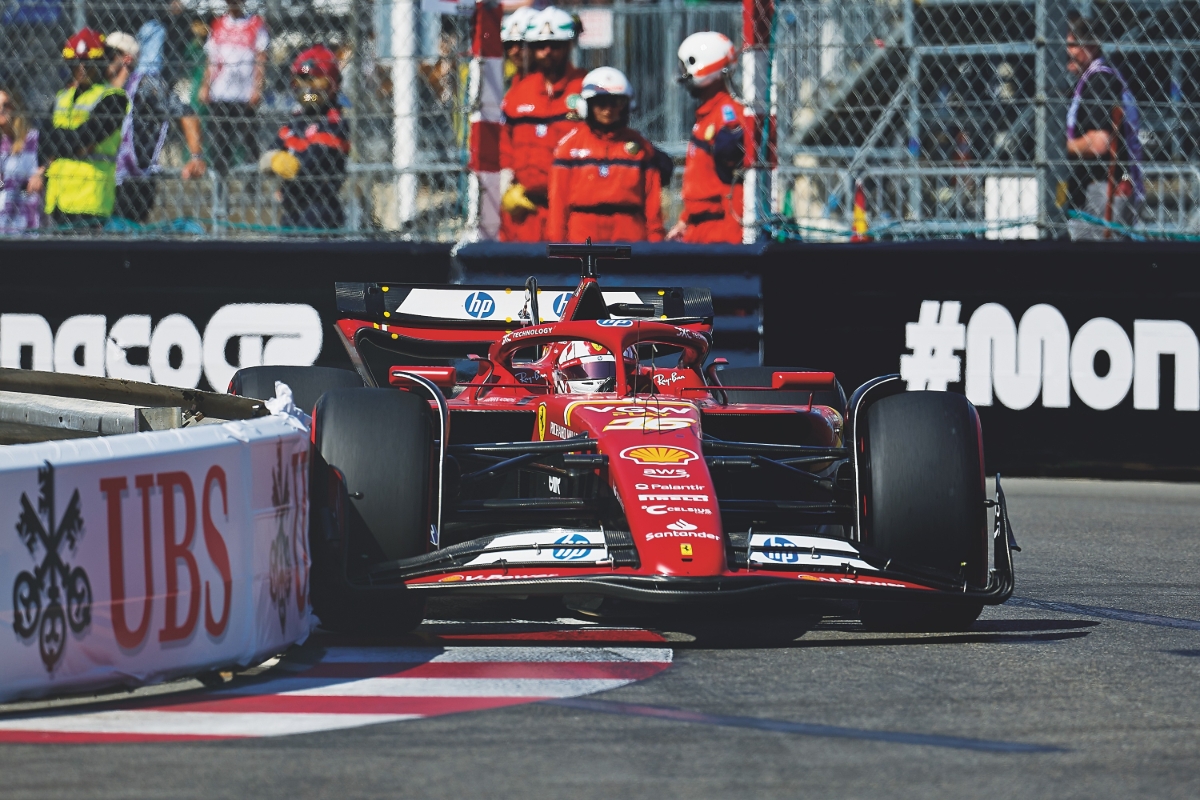
Officially a 19-turn track, Monaco is these days really about 14 cornering events – averaging out at just over one every 150 yards. That’s why the adjective drivers often use is “busy.”
The first, Ste. Devote, offers little margin for error, but is more straightforward than it once was, thanks to the smoothing out of the approach, albeit with the track surface still far from immaculate. That makes lockups slightly less easy to trigger into a corner with an unsatisfying approach geometrically and where the steering wheel is never quite straight. The exit is vital, given the long drag up the hill that follows, although last year Leclerc gained time on Oscar Piastri by attacking the braking zone, with his minimum speed of 72mph building to 170mph approaching the long Massenet left-hander.
Massenet is a high-wire act of a corner, as well as being the turn with the most variation in approach. Some opt for what you might call a preliminary turn-in coming over the crest, giving themselves a middling turn-in point. It’s the safe option, but others stick with the classic approach, hurling the car over the rise far to the right of the track then hoping the car responds well on turn-in. Leclerc, last year, was more toward the latter, hurling the car through the left-hander with a minimum speed of 106mph. It’s a high-risk, high-reward technique, one that caught out no less than Fernando Alonso in 2010 when he famously crashed there in FP3 and damaged his Ferrari chassis.
The Casino right-hander – 92mph for Leclerc – is a precision corner where the rear getting out of line can be costly, firing the cars down the short blast to Mirabeau. Here, even on modest laps, is the most obvious manifestation of one of the challenges of Monaco – wheel lift. As Leclerc says, “The wheel lifting and the amount of time in the air with the wheels not touching the ground” is a challenge, and the steep drop at the apex of Mirabeau is more mini cliff than bump. The effect is subtler elsewhere, but significant. What then follows is the hairpin, for which teams must make steering rack modifications and where Leclerc drops to first gear and 30mph – for an F1 car, that’s unheard of.
The following right hander carries the little-used moniker Mirabeau Bas (lower Mirabeau), but the next key corner is Portier. Good traction to maximize the exit is critical, given the long blast that follows through the tunnel, where the return to light momentarily blinds the drivers on exit. Last year, Leclerc’s over-eagerness on the throttle after a slightly conservative approach forced a momentary lift and cost him time – but, crucially, without compromising his exit.
The Nouvelle Chicane, installed in 1986 and therefore perhaps the least accurately named corner in F1, is all about braking. It’s not quite the challenge it once was, but the bumps have caused many a crash, with then-Sauber driver Sergio Perez, who went on to win in Monaco 11 years later, suffering a heavy impact in 2011.
Then comes the Tabac left-hander. With an apex speed of 111mph, this is a corner that’s all about threading the needle. It’s a corner where understeer is a problem, but can be countered by pointing the car just inside the apex and then letting the front sliding adjust your line. Ralf Schumacher’s famous crash here in a Toyota back in 2005 encapsulates what can go wrong if you do this and the front grips more than expected, Michael’s brother clipping the inside wall then crashing heavily on the outside.
The Swimming Pool left-right that follows is spectacular, but easy flat on Leclerc’s pole position lap. These days, the slower, second Swimming Pool chicane is more often the problem. Indeed, it was here in 2021 that Leclerc had the crash that caused damage leading to him failing to start from pole position.
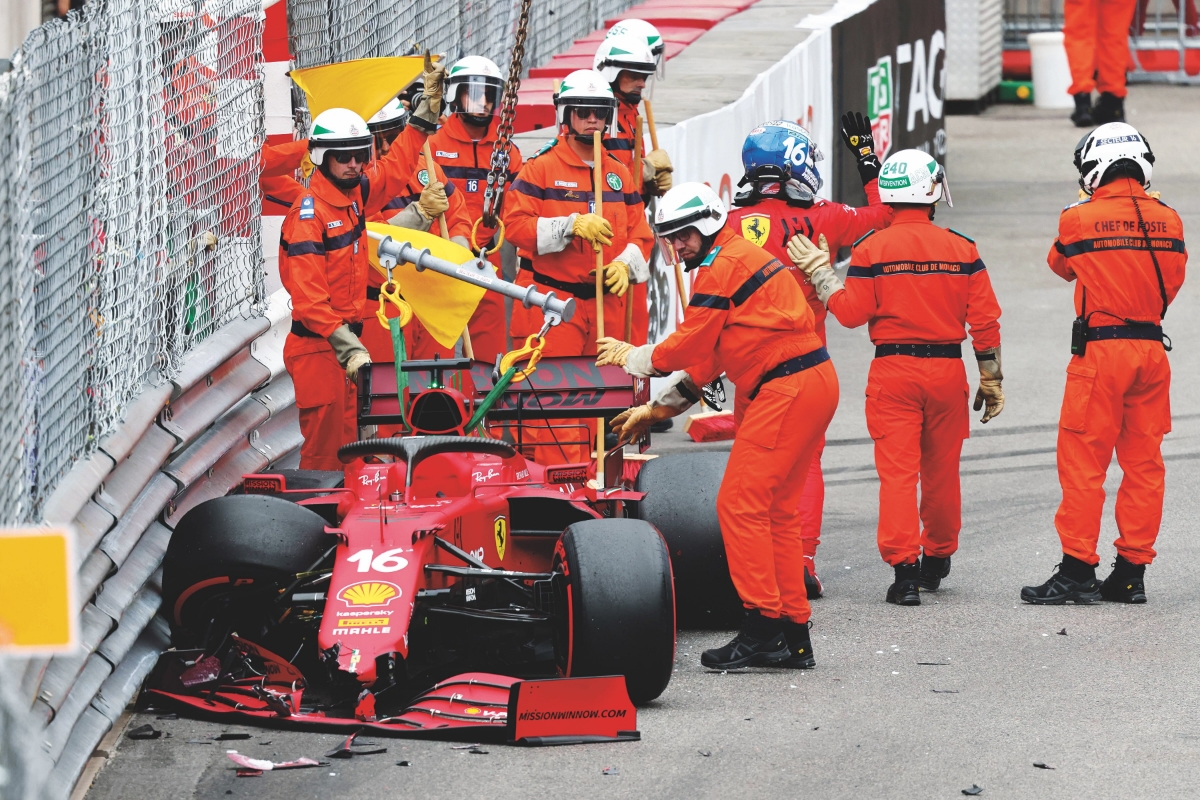
That 2021 crash also highlighted one of the hazards of qualifying, namely the regularity of red flags in Q3 – in this case, Leclerc inadvertently protecting his own fastest time in doing so. It was the consequence of a blink-and-you’ll-miss-it mistake, clipping the barrier at the apex of the first part of the left-right in a corner that can now be taken at just over 80mph. It was also here in 2018 that Max Verstappen crashed in FP3, keeping him out of qualifying and leaving the way clear for Red Bull Racing teammate Daniel Ricciardo to take pole position.
The Rascasse left-hander is an unwieldy one in F1 cars, but rarely one where significant time is gained or lost. This leads almost immediately into the final turn, the right hander named after Monaco Grand Prix founder Anthony Noghes. This is another corner where the exit, leading onto the start/finish, is critical, which is why the exit barrier that encroaches on the line at the exit of the corner is rarely a problem as drivers always aim to rotate the car early then gun it.
All of this happens in just 70 seconds, with moments where the steering wheel’s straight being few and far between. String it all together, and you are on the brink of victory in F1’s most famous race. Fail to do so, and you face a long, frustrating afternoon staring at someone else’s rear wing.
RACE MODE
No race is simpler to win than the Monaco Grand Prix – that is, once you’ve taken pole position. Simply get a good launch from first on the grid and you’re ideally placed. As Ricciardo proved in 2018, when he lost the 161hp of his electric motor mid-race, even with significant performance loss it’s relatively straightforward to park yourself in front of a line of traffic.
This has been the way of the Monaco GP for years, particularly since F1’s refueling ban kicked in for 2010. The chances of the polesitter not winning are significantly reduced by the fact that second prize in qualifying doesn’t give you much grip off the line. As Robert Kubica once said, “Starting second in Monaco is the worst,” and then proving that to be the case by slipping from second to third at the start in 2010 while driving for Renault.

This year, however, the equation is slightly complicated. F1’s regulations demand you must use two sets of Pirellis for each race, forcing a pit stop. Given the processional nature of Monaco, for this grand prix only it’s now mandatory to use three sets, which forces teams to adopt a two-stop strategy.
“I’m very glad it only happens this year, because with last year it would have complicated things a little bit, so at least I’ve ticked the box on that one,” says Leclerc. “It will add a little bit of spice to the race, which is needed. You always want to try and have as exciting races as possible. I don’t think it will change significantly, because of course it will remain very, very difficult to overtake, but it will all be about strategy.”
The trouble is, while this adds a little jeopardy, Aston Martin driver Lance Stroll’s summary that “everyone is going to do a two-stop and you still can’t pass, so I don’t know what’s going to change” has a lot going for it. It’s more a rule that could trip up the leader, or perhaps give a backmarker an opportunity.
That could be through running long in a stint and seeing what happens, but more intriguing is a tactic Williams driver Alex Albon suggests. “What stops you from pitting on lap one and lap two and then going long on the hard?” is his question – and the answer to that is, as the rules stand, nothing. Do that and it’s not completely out of the question that you’ll find yourself in the lead, although the extra incentive for the leader to build up a gap does mean that this is less likely.
The upshot of the rule change is that it might induce whoever is up front to push on to create a cushion, rather than being content to be the cork in the bottle, and perhaps that might increase the chance of a mistake. Then again, the whole effect might be reduced if there is a red flag, as happened last year. When the race is stopped, drivers are permitted to change tires for safety reasons and, in doing so, they satisfy the regulation demanding the use of two compounds of tire. This year, if there is a red flag, this will at least ensure there will be one pit stop sequence – unless, of course, there’s a second red flag.
Tire questions aside, the other potential curveball is weather. The last Monaco GP that started in the wet was in 2022, with the timing of pit stops crucial. While a wet race would wipe out the rule forcing two stops, it also creates greater opportunity for chaos.
Beyond this, Monaco really can be approached like a Sunday afternoon drive. If you are in the queue behind the leader there’s little opportunity to overtake. The best chance is presented by the chicane, where Max Verstappen tried to make a move on Lewis Hamilton late in the 2019 race and there was contact between the pair. But with no DRS, which is not considered safe on the blast through the tunnel and only available on the short start/finish straight, it’s a long shot that’s perhaps only made fractionally less unlikely by the fact that there are more likely to be tire-compound variations. But even so, defending is easy at Monaco to the point where there was a single-digit number of passing moves in last year’s race – none of them in the top 10.
This is the aspect of the Monaco Grand Prix that leads to many condemning it as an anachronism long outgrown by F1. But it remains a race that every driver is desperate to win, and it still requires enormous concentration to park your car at the front of the pack and stay there. That’s why race day on the Cote d’Azur remains one of the most popular of the year – even if it won’t provide even a fraction of the excitement of what’s to come later on in the day this year at Indianapolis Motor Speedway.
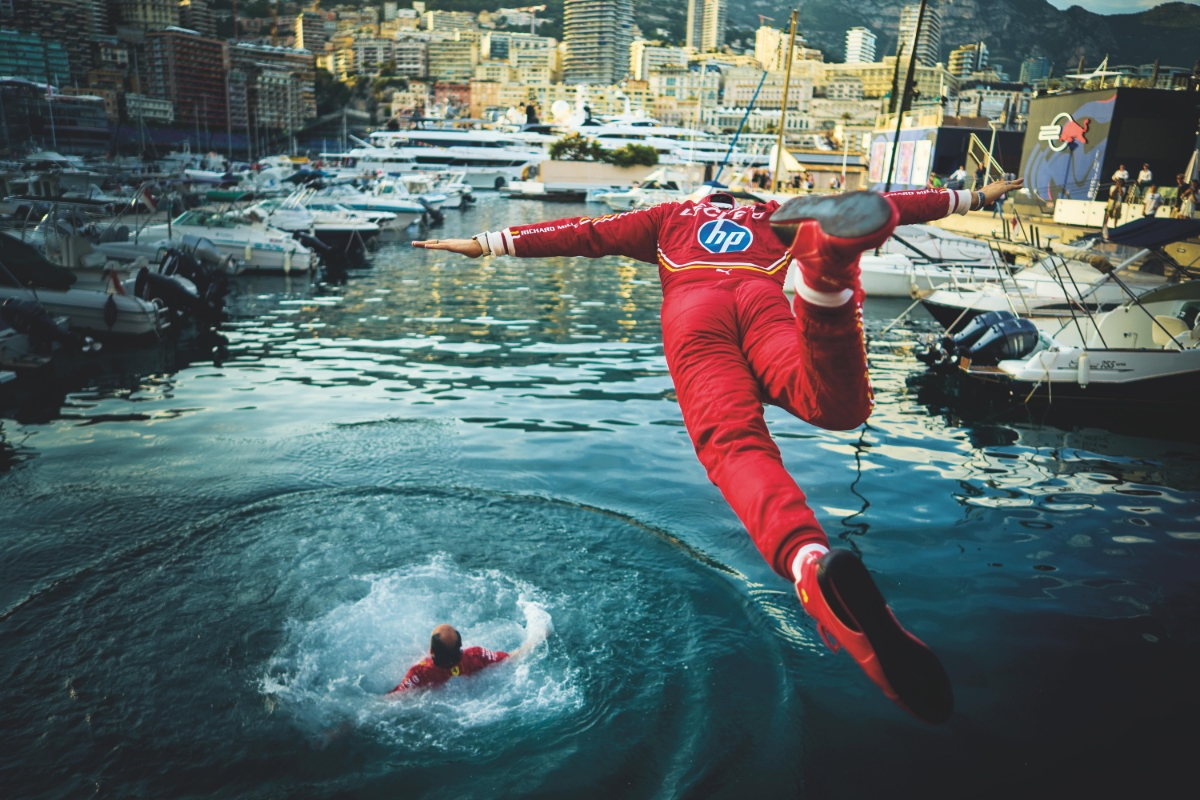
RACER magazine has always celebrated the spectacle and drama, showcased the stars and cars, and told the stories that take you inside motorsports, but now we’re delivering it in a bigger, better, more vibrant way and elevating the magazine experience once again. The latest RACER (No. 334, The Racing Movies Issue) includes a behind-the-scenes look at the soon-to-be-released “F1” movie and sets the scene for three of the world’s biggest races, the Monaco Grand Prix, Indianapolis 500 and 24 Hours of Le Mans.
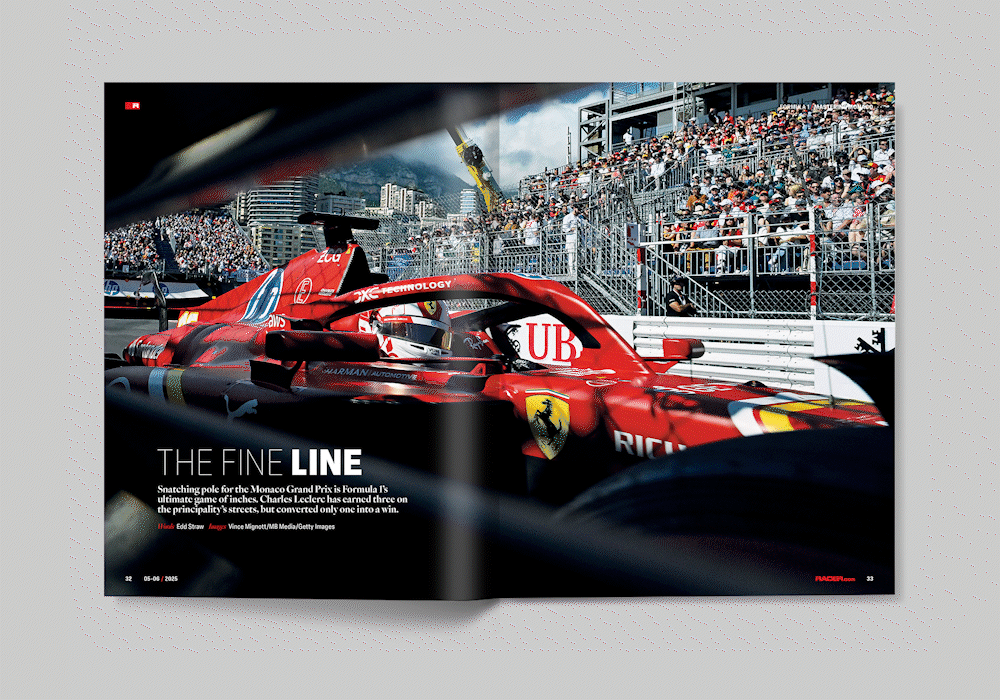
CLICK HERE to purchase the new issue of RACER. And to have the new-look RACER magazine delivered to your mailbox six times per year, CLICK HERE to check out print and digital subscription options.
ShareThis is disabled until you accept Social Networking cookies.
Edd Straw
Edd Straw is a Formula 1 journalist and broadcaster, and regular contributor to RACER magazine. He started his career in motorsport journalism at Autosport in 2002, reporting on a wide range of international motorsport before covering grand prix racing from 2008, as well as putting in stints as editor and editor-in-chief before moving on at the end of 2019. A familiar face both in the F1 paddock, and watching the cars trackside, his analytical approach has become his trademark, having had the privilege of watching all of the great grand prix drivers and teams of the 21st century in action - as well has having a keen interest in the history of motorsport. He was also once a keen amateur racing driver whose achievements are better measured in enjoyment than silverware.
Read Edd Straw's articles
Latest News
Comments
Disqus is disabled until you accept Social Networking cookies.
